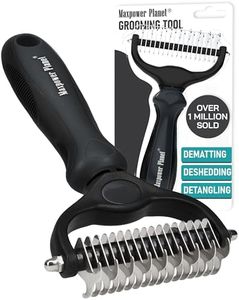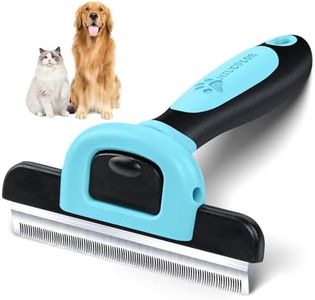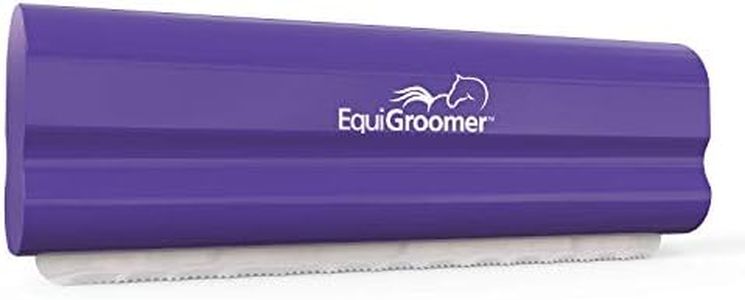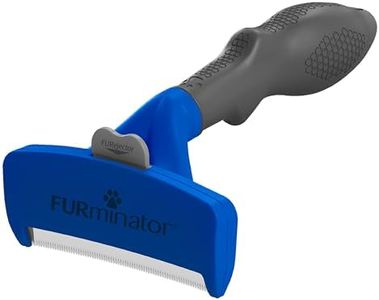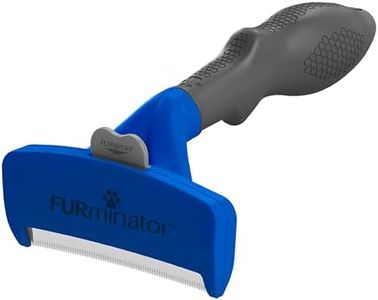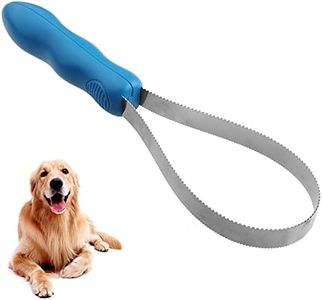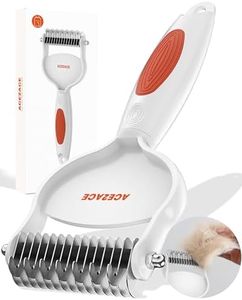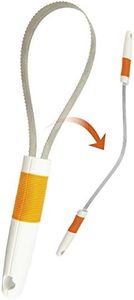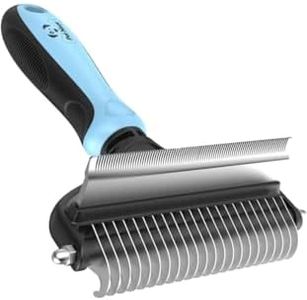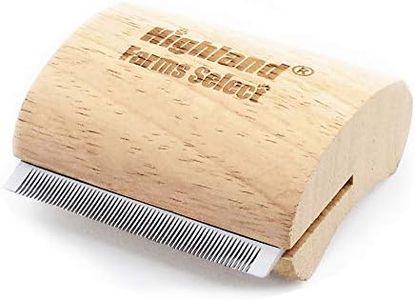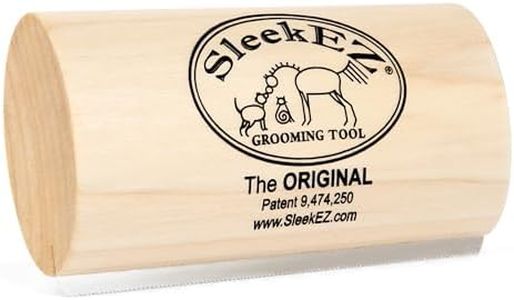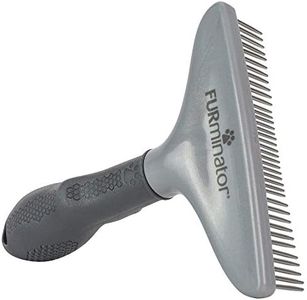We Use CookiesWe use cookies to enhance the security, performance,
functionality and for analytical and promotional activities. By continuing to browse this site you
are agreeing to our privacy policy
10 Best Dog Shedding Brushes
From leading brands and best sellers available on the web.Buying Guide for the Best Dog Shedding Brushes
Choosing the right dog-shedding brush can make a big difference in keeping your pet comfortable and your home cleaner. The best brush for your dog depends on their coat type, shedding level, and how comfortable both you and your dog are with grooming. Understanding the key features of shedding brushes will help you select one that makes grooming easier and more effective for your specific needs.Brush TypeBrush type refers to the design and function of the brush, such as slicker brushes, bristle brushes, undercoat rakes, or de-shedding tools. This is important because different coat types and shedding levels require different tools for effective grooming. Slicker brushes are good for removing loose fur and tangles in medium to long-haired dogs, while bristle brushes work well for short-haired breeds. Undercoat rakes and de-shedding tools are designed to reach deep into thick coats and remove loose undercoat hair. To pick the right one, consider your dog's coat length and thickness—choose a brush that matches their specific grooming needs.
Bristle or Pin MaterialThe material of the bristles or pins affects how gentle or effective the brush is. Common materials include metal, plastic, or natural bristles. Metal pins are usually more effective for thick or double coats, while softer bristles are better for sensitive skin or short-haired dogs. If your dog has sensitive skin, opt for softer or rounded tips to avoid irritation. For heavy shedders with thick coats, metal pins or blades can help remove more hair.
Brush SizeBrush size refers to the width and length of the brush head. A larger brush covers more area and is suitable for bigger dogs or for grooming large sections quickly, while a smaller brush offers more control and is better for small dogs or for reaching tight spots. Choose a size that matches your dog's body size and your comfort in handling the brush.
Handle ComfortHandle comfort is about how easy and comfortable the brush is to hold during grooming sessions. Ergonomic, non-slip handles can make a big difference, especially if you have a large dog or need to brush for longer periods. If you have hand or wrist issues, look for brushes with padded or contoured handles to reduce strain.
Ease of CleaningEase of cleaning refers to how simple it is to remove collected hair from the brush. Some brushes have self-cleaning buttons or designs that make it easy to pull out the hair, while others may require manual cleaning. If you plan to groom your dog frequently or have a heavy shedder, a brush that's easy to clean will save you time and effort.


